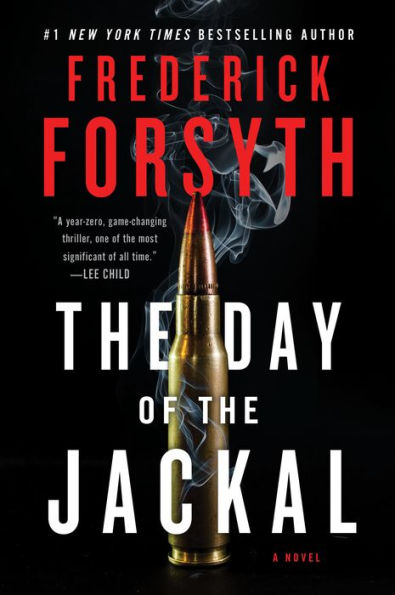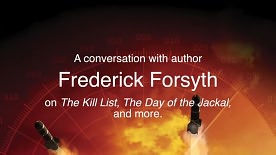Read an Excerpt
one
It is cold at 6:40 in the morning of a March day in Paris, and seems even colder when a man is about to be executed by firing squad. At that hour on March 11, 1963, in the main courtyard of the Fort d’Ivry a French Air Force colonel stood before a stake driven into the chilly gravel as his hands were bound behind the post, and stared with slowly diminishing disbelief at the squad of soldiers facing him twenty metres away. A foot scuffed the grit, a tiny release from tension, as the blindfold was wrapped around the eyes of Lieutenant-Colonel Jean-Marie Bastien-Thiry, age thirty-five, blotting out the light for the last time. The mumbling of the priest was a helpless counterpoint to the crackling of twenty rifle bolts as the soldiers charged and cocked their carbines. Beyond the walls a Berliet truck blared for passage as some smaller vehicle crossed its path towards the centre of the city; the sound died away, masking the “Take your aim” order from the officer in charge of the squad. The crash of rifle fire, when it came, caused no ripple on the surface of the waking city, other than to send a flutter of pigeons skyward for a few moments. The single “whack” seconds later of the coup de grâce was lost in the rising din of traffic from beyond the walls. The death of the officer, leader of a gang of Secret Army Organisation killers who had sought to shoot the President of France, was to have been an end—an end to further attempts on the President’s life. By a quirk of fate it marked a beginning, and to explain why, it is first necessary to explain why a riddled body came to hang from its ropes in the courtyard of the military prison outside Paris on that March morning. . . . The sun had dropped at last behind the palace wall, and long shadows rippled across the courtyard bringing a welcome relief. Even at 7 in the evening of the hottest day of the year the temperature was still twenty-five degrees centigrade. Across the sweltering city the Parisians piled querulous wives and yelling children into cars and trains to leave for the weekend in the country. It was August 22, 1962, the day a few men waiting beyond the city boundaries had decided that the President, General Charles de Gaulle, should die. While the city’s population prepared to flee the heat for the relative cool of the rivers and beaches, the cabinet meeting behind the ornate façade of the Elysée Palace continued. Across the tan gravel of the front courtyard, now cooling in welcome shadow, sixteen black Citroen DS sedans were drawn up nose to tail, forming a circle round three-quarters of the area. The drivers, lurking in the deepest shade close to the west wall where the shadows had arrived first, exchanged the inconsequential banter of those who spend most of their working days waiting on their masters’ whims. There was more desultory grumbling at the unusual length of the Cabinet’s deliberations, until a moment before 7:30 a chained and bemedalled usher appeared behind the plate glass doors at the top of the six steps of the palace and gestured towards the guards. Among the drivers, half-smoked Gauloises were dropped and ground into the gravel. The security men and guards stiffened in their boxes beside the front gate and the massive iron grilles were swung open. The chauffeurs were at the wheels of their limousines when the first group of ministers appeared behind the plate glass. The usher opened the doors and the members of the Cabinet straggled down the steps exchanging a few last-minute wishes for a restful weekend. In order of precedence the sedans eased up to the base of the steps, the usher opened the rear door with a bow, the Ministers climbed into their respective cars and were driven away past the salutes of the Garde Républicaine and out into Faubourg Saint Honoré. Within ten minutes they were gone. Two long black DS 19 Citroens remained in the yard, and each slowly cruised to the base of the steps. The first, flying the pennant of the President of the French Republic, was driven by François Marroux, a police driver from the training and headquarters camp of the Gendarmerie Nationale at Satory. His silent temperament had kept him apart from the joking of the ministerial drivers in the courtyard; his ice-cold nerves and ability to drive fast and safely kept him de Gaulle’s personal driver. Apart from Marroux, the car was empty. Behind it the second DS 19 was also driven by a gendarme from Satory. At 7:45 another group appeared behind the glass doors, and again the men on the gravel stiffened to attention. Dressed in his habitual double-breasted charcoal grey suit and dark tie, Charles de Gaulle appeared behind the glass. With old-world courtesy he first ushered Madame Yvonne de Gaulle through the doors, then took her arm to guide her down the steps to the waiting Citroen. They parted at the car, and the President’s wife climbed into the rear seat of the front vehicle on the left-hand side. The General got in behind her from the right. Their son-in-law, Colonel Alain de Boissieu, then chief-of-staff of the Armoured and Cavalry units of the French Army, checked that both rear doors were safely shut, then took his place in the front beside Marroux. In the second car two others from the group of functionaries who had accompanied the presidential couple down the steps took their seats. Henri d’Jouder, the hulking bodyguard of the day, a Kabyle from Algeria, took the front seat beside the driver, eased the heavy revolver under his armpit, and slumped back. From then on his eyes would flicker incessantly, not over the car in front, but over the pavements and street corners as they flashed past. After a last word to one of the duty security men to be left behind, the second man got into the back alone. He was Commissaire Jean Ducret, chief of the Presidential Security Corps. From beside the west wall two white-helmeted motorcyclists gunned their engines into life and rode slowly out of the shadows towards the gate. Before the entrance they stopped ten feet apart and glanced back. Marroux pulled the first Citroen away from the steps, swung towards the gate, and drew up behind the motorcycle outriders. The second car followed. It was 7:50 p.m. Again the iron grille swung open, and the small cortege swept past the ramrod guards into the Faubourg Saint Honoré and from there into the Avenue de Marigny. From under the chestnut trees a young man in a white crash helmet astride a scooter watched the cortege pass, then slid away from the curb and followed. Traffic was normal for an August weekend, and no advance warning of the President’s departure had been given. Only the whine of the motorcycle sirens told traffic cops on duty of the approach of the convoy, and they had to wave and whistle frantically to get the traffic stopped in time. The convoy picked up speed in the tree-darkened avenue and erupted into the sunlit Place Clemenceau, heading straight across towards the Pont Alexandre III. Riding in the slipstream of the official cars, the scooterist had little difficulty in following. After the bridge Marroux followed the motorcyclists into the Avenue General Gallieni and thence into the broad Boulevard des Invalides. The scooterist at this point had his answer—the route de Gaulle’s convoy would take out of Paris. At the junction of the Boulevard des Invalides and the rue de Varennes he eased back the screaming throttle and swerved towards a corner cafe. Inside, taking a small metal token from his pocket, he strode to the back of the cafe where the telephone was situated and placed a local call. Lieutenant-Colonel Jean-Marie Bastien-Thiry waited in the suburb of Meudon. He was married, with three children, and he worked in the Air Ministry. Behind the conventional façade of his professional and family life, he nurtured a deep bitterness towards Charles de Gaulle, who, he believed, had betrayed France and the men who in 1958 had called him back to power by yielding Algeria to the Algerian nationalists. He personally had lost nothing through the loss of Algeria, and it was not personal consideration that motivated him. In his own eyes he was a patriot, a man convinced that he would be serving his beloved country by slaying the man he thought had betrayed her. Many thousands shared his views at that time, but few in comparison were fanatical members of the Secret Army Organisations, which had sworn to kill de Gaulle and bring down his government. Bastien-Thiry was such a man. He was sipping a beer when the call came through. The barman passed him the phone, then went to adjust the television set at the other end of the bar. Bastien-Thiry listened for a few seconds, muttered, “Very good, thank you,” into the mouthpiece, and set it down. His beer was already paid for. He strolled out of the bar onto the pavement, took a rolled newspaper from under his arm, and carefully unfolded it twice. Across the street a young woman let drop the lace curtain of her first-floor flat, and, turning to the twelve men who lounged about the room, she said, “It’s route number two.” The five youngsters, amateurs at the business of killing, stopped twisting their hands and jumped up. The other seven were older and less nervous. Senior among them in the assassination attempt and second-in-command to Bastien-Thiry was Lieutenant Alain Bougrenet de la Tocnaye, an extreme right-winger from a family of landed gentry. He was thirty-five, married, with two children. The most dangerous man in the room was Georges Watin, aged thirty-nine, a bulky-shouldered, square-jowled OAS fanatic, originally an agricultural engineer from Algeria, who in two years had emerged again as one of the OAS’s most dangerous trigger-men. From an old leg-wound he was known as “the Limp.” When the girl announced the news, the twelve men trooped downstairs via the back of the building to a side street where six vehicles, all stolen or hired, had been parked. The time was 7:55. Bastien-Thiry had personally spent days preparing the site of the assassination, measuring angles of fire, speed and distance of the moving vehicles, and the degree of firepower necessary to stop them. The place he had chosen was a long straight road called the Avenue de la Libération, leading up to the main crossroads of Petit-Clamart. The plan was for the first group containing the marksmen with their rifles to open fire on the President’s car some two hundred yards before the crossroads. They would shelter behind an Estafette van parked by the roadside, beginning their fire at a very shallow angle to the oncoming vehicles. By Bastien-Thiry’s calculations, 150 bullets should pass through the leading car by the time it came abreast of the van. With the presidential car brought to a stop, the second OAS group would sweep out of a side road to blast the security police vehicle at close range. Both groups would spend a few seconds finishing off the presidential party, then spring for the three getaway vehicles in another side street. Bastien-Thiry himself, the thirteenth of the party, would be a lookout man. By 8:05 the groups were in position. A hundred yards on the Paris side of the ambush, Bastien-Thiry stood idly by a bus stop with his newspaper. Waving the newspaper would give the signal to Serge Bernier, leader of the first commando, who would be standing by the Estafette. He would pass the order to the gunmen spread-eagled in the grass at his feet. Bougrenet de la Tocnaye would drive the car to intercept the security police, with Watin the Limp beside him clutching a submachine gun.
As the safety catches flicked off beside the road at Petit-Clamart, General de Gaulle’s convoy cleared the heavier traffic of central Paris and reached the more open avenues of the suburbs. Here the speed increased to nearly sixty miles per hour. As the road opened out, François Marroux flicked a glance at his watch, sensed the testy impatience of the old General behind him, and pushed the speed up even higher. The two motorcycle outriders dropped back to take up station at the rear of the convoy. De Gaulle never liked such ostentation sitting out in front and dispensed with them whenever he could. In this manner the convoy entered the Avenue de la Division Leclerc at Petit-Clamart. It was 8:17 p.m. A mile up the road Bastien-Thiry was experiencing the effects of his big mistake. He would not learn of it until told by the police as he sat months later in Death Row. Investigating the timetable of his assassination, he had consulted a calendar to discover that dusk fell on August 22 at 8:35, seemingly plenty late enough even if de Gaulle was late on his usual schedule, as indeed he was. But the calendar the Air Force colonel had consulted related to 1961. On August 22, 1962, dusk fell at 8:10. Those twenty-five minutes were to change the history of France. At 8:18 Bastien-Thiry discerned the convoy hurtling down the Avenue de la Libération towards him at seventy miles per hour. Frantically he waved his newspaper. Across the road and a hundred yards down, Bernier peered angrily through the gloom at the dim figure by the bus stop. “Has the colonel waved his paper yet?” he asked of no one in particular. The words were hardly out of his mouth when he saw the shark-nose of the President’s car flash past the bus stop and into vision. “Fire,” he screamed to the men at his feet. They opened up as the convoy came abreast of them, firing with a ninety-degree layoff at a moving target passing them at seventy miles per hour. That the car took twelve bullets at all was a tribute to the killers’ marksmanship. Most of those hit the Citroen from behind. Two tires shredded under the fire, and although they were self-sealing tubes the sudden loss of pressure caused the speeding car to lurch and go into a front-wheel skid. That was when François Marroux saved de Gaulle’s life. While the ace marksman, ex-legionnaire Varga, cut up the tires, the remainder emptied their magazines at the disappearing rear window. Several slugs passed through the bodywork, and one shattered the rear window, passing within a few inches of the presidential nose. In the front seat Colonel de Boissieu turned and roared, “Get down,” at his parents-in-law. Madame de Gaulle lowered her head towards her husband’s lap. The General gave vent to a frosty “What, again?” and turned to look out of the back window.




